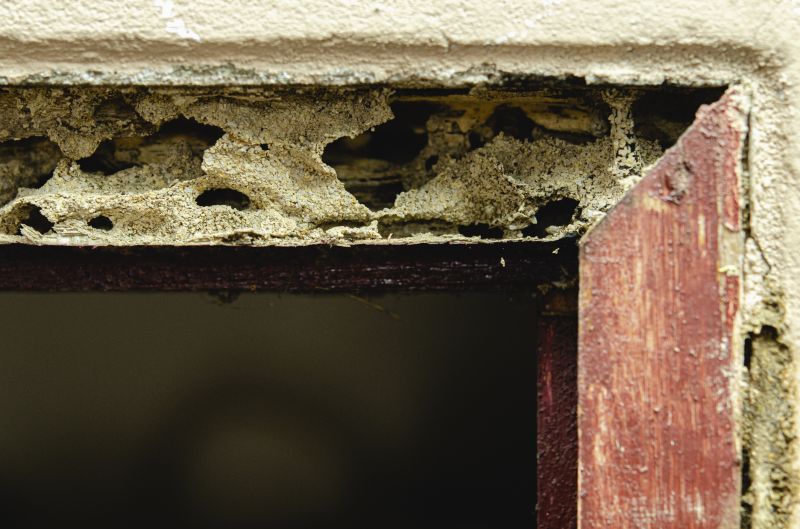Favorite Wood Rot Repair Items for DIY Projects
Select trusted products that make repairing wood rot straightforward, whether for small repairs or large restoration jobs.
 Wood rot is a common issue that can compromise the integrity and appearance of wooden structures, including decks, fences, siding, and furniture. Addressing wood rot promptly is essential to prevent further deterioration and potential safety hazards. Repairing wood rot typically involves removing the decayed material, treating the affected area to inhibit future decay, and applying suitable fillers or sealants to restore the wood's stability. Various products are available to facilitate these repairs, each tailored to different levels of damage and types of wood surfaces. Choosing the right repair products can help ensure a durable and effective fix, extending the lifespan of wooden structures.
Wood rot is a common issue that can compromise the integrity and appearance of wooden structures, including decks, fences, siding, and furniture. Addressing wood rot promptly is essential to prevent further deterioration and potential safety hazards. Repairing wood rot typically involves removing the decayed material, treating the affected area to inhibit future decay, and applying suitable fillers or sealants to restore the wood's stability. Various products are available to facilitate these repairs, each tailored to different levels of damage and types of wood surfaces. Choosing the right repair products can help ensure a durable and effective fix, extending the lifespan of wooden structures.
Top Overall Option
Comprehensive Wood Repair Kit
A versatile wood repair kit that includes wood consolidants, fillers, and sealants designed for multiple repair scenarios. It offers a complete solution for addressing wood rot, decay, and surface damage, making it suitable for both small and large projects. Its ease of use and comprehensive components make it a popular choice for DIY enthusiasts and professionals alike.
Types of Products For Wood Rot Repairs
Wood Consolidants
Products that penetrate and strengthen decayed wood, providing a solid base for further repairs.
Wood Fillers and Epoxies
Materials used to fill gaps, holes, and decayed areas, restoring shape and stability to damaged wood.
Waterproof Sealants
Sealants that protect repaired wood from moisture intrusion, extending the lifespan of the repair.
Surface Cleaners
Solutions designed to remove dirt, mold, and loose material before applying repair products.
Rot Inhibitors
Chemical treatments that prevent the recurrence of rot by inhibiting fungal growth.
Patching Compounds
Ready-to-use compounds for quick fixes on small areas of damaged wood.
Wood Hardening Agents
Products that strengthen soft or decayed wood fibers, making them more resistant to future damage.
Moisture Barriers
Materials that prevent moisture penetration, crucial for protecting repaired wood from future rot.
Fiberglass Reinforcements
Reinforcement materials used in conjunction with fillers to add strength to repaired areas.
Paintable Wood Restorers
Products that restore the appearance of wood and can be painted over for aesthetic purposes.
Popular Choices
A widely used epoxy for filling and stabilizing decayed wood, suitable for structural repairs.
A quick-setting paste designed for small patches and surface repairs on wood surfaces.
A popular product for stabilizing soft or rotted wood prior to filling or sealing.
A common choice for protecting repaired wood from moisture and prolonging its lifespan.
An easy-to-apply putty for minor repairs and surface smoothing on damaged wood.
A trending product to prevent the recurrence of rot caused by fungal growth.
A versatile product used for quick repairs on small to medium-sized damaged areas.
A popular choice for reinforcing large or structural wood repairs.
Essential for preparing wood surfaces before applying repair products, ensuring better adhesion.
Frequently selected to protect repaired areas from future water damage.
When selecting products for wood rot repairs, it is important to consider the extent of the damage, the type of wood, and the environmental conditions the repaired area will face. Some products are designed for quick fixes, while others offer long-term solutions with added protection against moisture and pests. Proper surface preparation and application techniques are crucial for optimal results. Regular maintenance and inspections can also help catch early signs of rot, making repairs more manageable and less costly over time.
Effective repair products often combine cleaning agents, wood consolidants, fillers, and sealants to provide comprehensive treatment. Using a compatible set of products can improve adhesion and durability. It is advisable to follow manufacturer instructions carefully, ensuring proper curing times and application methods. With the right approach and quality products, homeowners and professionals can restore the structural integrity and aesthetic appeal of wood surfaces, safeguarding their investments against future damage.
Key Buying Considerations
- Assess the extent of the wood damage to determine the appropriate repair product type.
- Choose products compatible with the specific wood species and surface conditions.
- Consider whether the repair requires structural reinforcement or surface restoration.
- Evaluate the environmental conditions the repaired wood will face, such as exposure to moisture or sunlight.
- Look for products that offer ease of application and sufficient working time for your project.
- Check for compatibility between consolidants, fillers, and sealants to ensure long-lasting repairs.
- Determine if the product provides adequate protection against future decay and pests.
- Review curing times and whether additional finishing steps, like painting or staining, are needed.
- Consider the size of the repair area to select appropriately sized or multi-pack options.
- Prioritize products with clear instructions and safety guidelines for best results.
- Think about budget constraints while balancing quality and durability.
- Read user reviews and ratings for insights into real-world performance.
- Ensure the product is suitable for indoor or outdoor use, depending on your project location.
- Verify the availability of technical support or customer service if needed.
This page contains affiliate links. We may earn a commission if you purchase through these links, at no additional cost to you.
